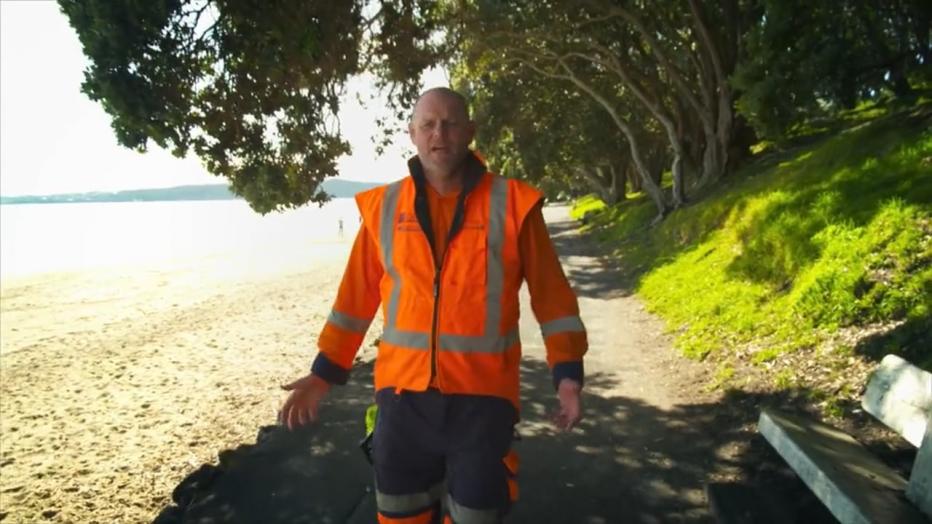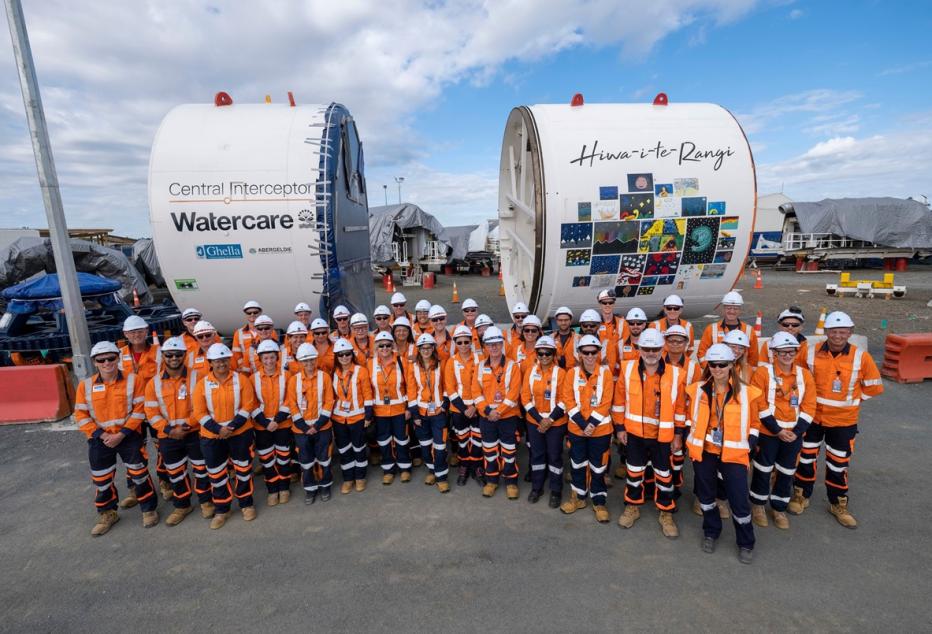
Central Interceptor Watercare and Jacobs team
One of the most populous and vibrant cities of New Zealand, Auckland is home to more than 1.7 million people. Resting on the isthmus between the Tasman Sea and the Pacific Ocean, the city has a unique geography stretching across volcanic hills, beaches, and its twin harbors - Waitematā Harbor on the Pacific Ocean and Manukau Harbor on the Tasman Sea
To keep the city’s life-sustaining waterways healthy, Watercare, the Auckland Council organization responsible for providing essential water and wastewater services to the city, has been treating a massive 108 million gallons (410 million liters) of wastewater every day through its wastewater network, which is equipped with 18 treatment plants, 4,970 miles (7,999-kilometers) of wastewater pipes and 518 wastewater pump stations.
However, when it rains, some pipes in the central wastewater network overflow into local waterways and the Waitematā Harbour as well as the Manukau Harbor.
To ensure cleaner waterways and future-proof the wastewater infrastructure for the city's growing population, Watercare is investing $840 million (NZ$1.2 billion) in building a supersized wastewater tunnel – Central Interceptor (CI) – right in the center of Auckland.
CI is New Zealand's largest-ever wastewater project and an integral part of Watercare’s region-wide wastewater strategy. Construction of the project began in 2019 and is expected to continue over a period of seven years, until 2026.
Since 2014, Jacobs' global and local teams with extensive experience in constructing deep tunnel water conveyance systems have been engaged as the professional engineering advisor on this mega project, providing detailed design services. In 2019, we secured a contract extension to offer construction management and design support services for the construction phase of the CI project.
Once operational, CI, together with Watercare's other projects in the western isthmus, will reduce the wet weather overflows in the area by up to 80 per cent.
-
80
Olympic-sized swimming pools equivalent storage capacity
-
9
mile-long tunnel - longest wastewater tunnel in New Zealand
-
4
rhinos could fit side-by-side in the tunnel
A mega wastewater tunnel project to ensure cleaner waterways in Auckland
By drastically reducing wet-weather overflows in central Auckland, the Central Interceptor (CI) will help safeguard the health of waterways not just now, but for years to come.
Auckland’s population is growing fast – by early next decade the city is expected to be home to more than 2 million residents. CI, the largest wastewater project in New Zealand, is an integral part of Watercare’s long-term wastewater strategy providing additional wastewater capacity for Auckland’s expanding population, connecting future wastewater projects, and effectively managing wastewater within the city.
“We are fortunate that the global Jacobs business has been able to mobilize talent with significant experience in delivering similar major programs around the world. A lot of the team is new to New Zealand. They have settled in very well and quickly become ambassadors for our project despite the difficulties they have, and continue to overcome, regarding the COVID-19 pandemic.”
How massive is CI's wastewater tunnel?
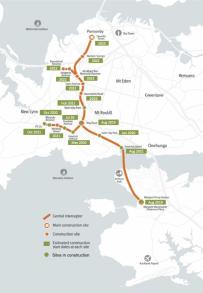
CI’s dimensions are impressive. At 14.7 feet (4.5 meters) wide and nine miles (14.7 kilometers)in length, it's the longest bored wastewater tunnel in New Zealand. The tunnel will run 49 feet (15 meters) to 360 feet (110 meters) underground, from Grey Lynn to Māngere Wastewater Treatment Plant.
With a massive capacity of more than 7 million cubic feet (200,000m3) CI will double as wastewater storage, giving Watercare better control over the flow rate of wastewater into the treatment plant.
The tunnel will include other structures at the connection points, such as access shafts, drop shafts, flow control structures, overflow structures, grit traps, air vents, and air treatment facilities. The shafts will collect and transfer wastewater from the existing wastewater network into the tunnel, providing a more direct route to the Māngere Wastewater Treatment Plant for much of central Auckland’s wastewater flows.
How we're helping Watercare design and construct this mega project
Since 2014, Jacobs has been engaged as the professional engineering advisor for the CI project. Our team led the detailed design for the main tunnel, shafts, link sewers, odor control facilities and the new Māngere Pump Station.
We are now delivering construction management and design support services for the construction phase that started in 2019 and is slated to conclude in 2026.
Our tunnel and ground engineering team has been involved with the project from concept design through to construction. We were responsible for designing, managing, and reviewing extensive site investigation; developing the preferred route alignment to avoid geological hazards such as deep infilled paleo valleys and basalt lava flows, as well as ensuring sufficient cover as the sewer passes beneath Manakau harbor.
We were also in charge of managing baselining ground conditions anticipated along the tunnel drives and at each of the 17 shaft sites and mapping the ground conditions encountered during construction.
Interestingly, the project provides great insight into the geological development of Auckland. Working with the Auckland Museum, our team has identified four new fossil species from ancient corals to fossilized stingray teeth.
“Jacobs has been able to deploy its full range of project management, technical and delivery capabilities for this program, which involves some of the most challenging tunneling and interface works at Watercare that are crucial to delivering New Zealand’s largest ever wastewater project.”
Mobilizing our global expertise despite the pandemic
CI is the largest capital project that Watercare has ever undertaken. To support the delivery of this strategic project, we assembled a global team with extensive experience in the construction of deep tunnel water conveyance systems. Our international team of specialists with experience in leading similar programs in London, Singapore, the UAE, and Qatar, were relocated to Auckland to support our local New Zealand-based team.
Although the COVID-19 pandemic posed challenges to relocating our teams from across the globe, thoughtful resource planning helped us tide it over; in fact, the number of experts moving to New Zealand to deliver CI has only continued to grow.
Today Jacobs and Watercare are delivering CI as one team – a collaborative and synergetic approach harnessing the skillsets of both organizations.
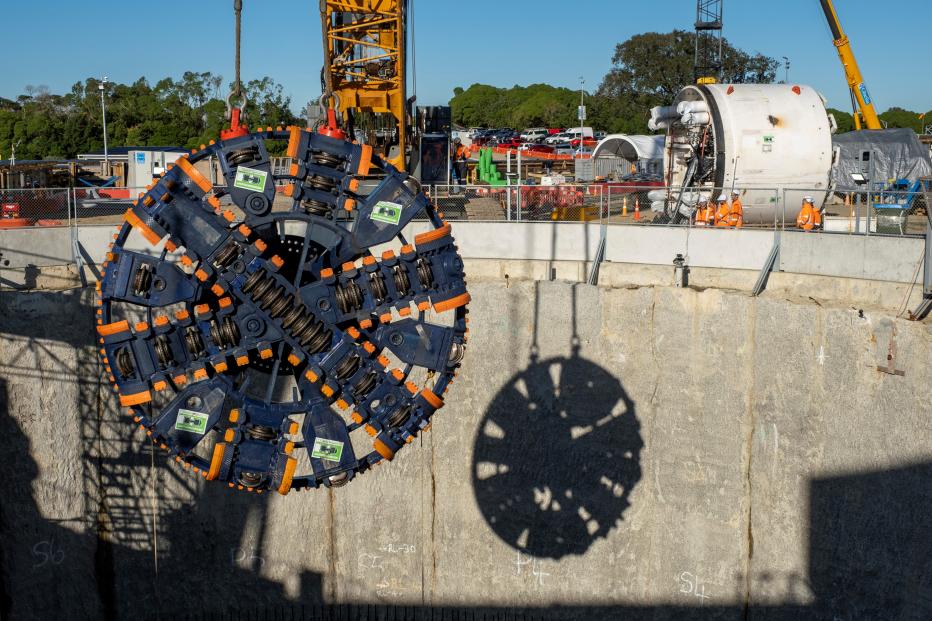
Cutterhead lowering – June 2021
Helping achieve the highest possible Infrastructure Sustainability Council rating
We helped Watercare prepare the project design that was awarded a “Leading Infrastructure Sustainability Council (ISC) Design Rating” – the highest possible ISC rating. This was achieved by whole-of-life energy reduction through network efficiency, pump design, and shaft optimization, among other reductions.
-
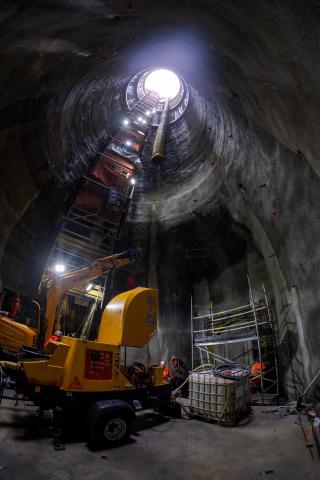
May Rd – April 2021
-
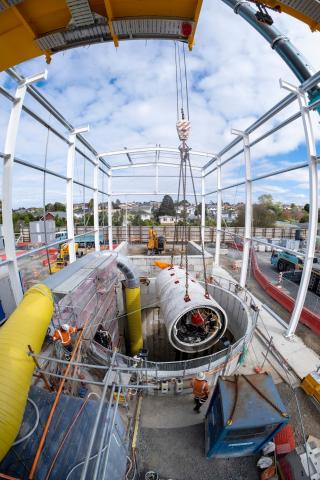
Micro-Tunnel Boring Machine Lowering – May Rd – May 2021
-
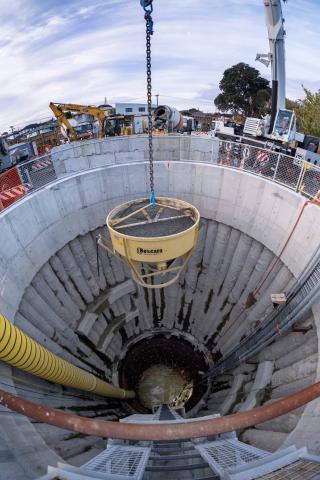
Haycock – Base Pour -May 2021
-
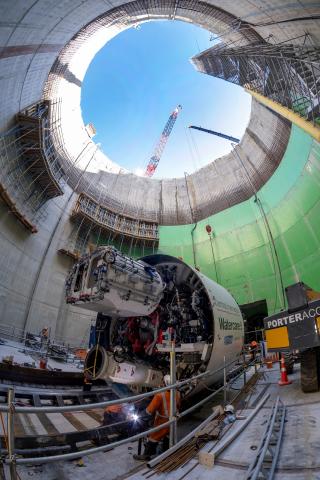
CI – Mangere Pumping Station Shaft TBM- June 2021
-
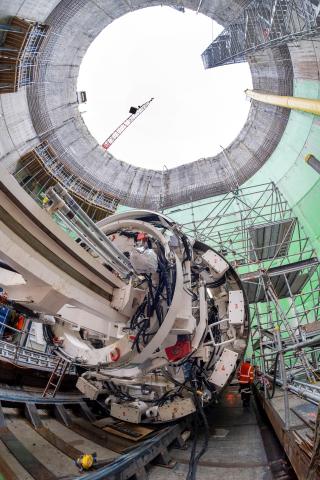
CI – Mangere Pumping Station Shaft TBM- June 2021
CI to make cleaner waterways a reality
The Central Interceptor project is well underway. Hiwa-i-te-Rangi left the Māngere Wastewater Treatment Plant in August 2021 and in December 2022, completed an approximately one mile (1,500 meter) stretch under the Manukau Harbour to achieve her first shaft break-through next to a Watercare wastewater pump station in Hillsborough. She then began her journey towards central Auckland and in September 2023, broke through into a shaft in May Road, achieving the significant milestone of reaching the halfway point of her nine mile (14.7 kilometer) journey.
Work on the first of two link sewers is complete with the second under construction. Both link sewers are due for commissioning by mid-2024. A micro-TBM called ‘Domenica’ has achieved three break-throughs, including a 0.75 mile (1,212 meter) section. This is the longest single drive of the project and was second only to Watercare’s Hūnua 4 water pipeline, completed in July, which was constructed using similar pipejacking methods and held a southern hemisphere record for the longest single drive (0.8 miles or 1,296 meters).
The social outcomes and sustainability teams have also enjoyed success: “Te Whare Manaaki”— a boutique commercial laundry provided by the Central Interceptor project and operated by local Māori hapū, Te Ahiwaru recently celebrated its first anniversary. Laundry staff wash, dry and repair PPE for Central Interceptor construction teams and once the project has finished, the laundry will be handed over to Te Ahiwaru to run independently.
Meanwhile, sustainability teams have undertaken eel recovery training, to learn how to rescue native fish in the event of a chemical spill into waterways and have taken delivery of the project’s first electric trucks, which will transport tunnel spoil.
The TBM named Hiwa-i-te-Rangi: The backstory
Students from the schools en route to the Central Interceptor tunnel were asked to select a name for the TBM from the Matariki stars - a cluster of nine stars – that best represented the goals of the project and whose characteristics resonated with them. Hiwa-i-te-Rangi, the Matariki star to which Māori would send their dreams and aspirations for the new year, was the winning choice by over 100 votes!
Source: Central Interceptor’s Tunnel Boring Machine receives Matariki star name
Once operational, CI will help reduce wet weather overflows and ensure the health of Auckland’s waterways, making cleaner beaches and estuaries available for residents to enjoy across seasons. CI will also provide additional wastewater network capacity to central Auckland and free up capacity in the east and west of the city. With this, Watercare will be able to ensure that its wastewater management services for the community remain unaffected even when some parts of its critical wastewater infrastructure shut down for maintenance.
Aucklanders are looking forward to CI springing into action.
Central Interceptor is here!
